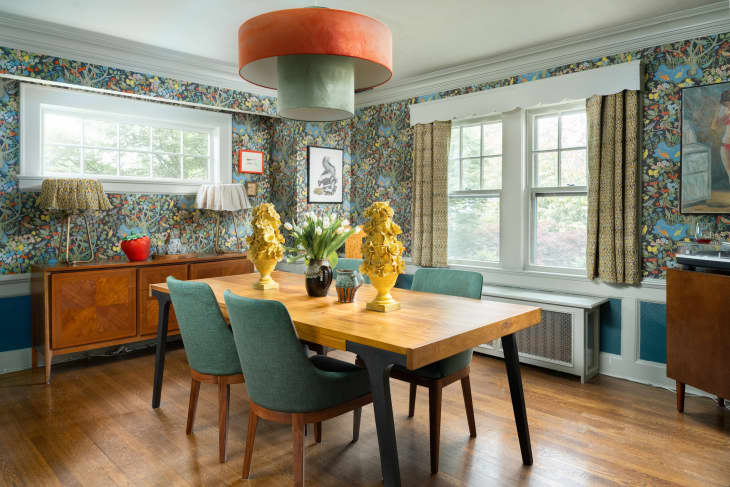This Is the Curtain “Mistake” Designers Want You to Make
Paneled curtains have stayed relatively predictable over the past few years. Usually, they consist of long yards of fabric on both sides of a window, with hems that ever-so-delicately brush the floors beneath them. It’s often seen as somewhat daring to have fabric that pools at the bottom, just as it’s “wrong” to have them hang a few inches above the ground. But a surprising new style is emerging: Curtains that hit just below the window pane, leaving the rest of the lower wall open.
“Shorter lengths can feel more casual and lighter than the formality of long panels,” says designer Hollie Velten-Lattrell, the founder and principal of Spaces by Hollie Velten. “We’re seeing skirted trends in lighting by way of lampshades, so it makes sense that people are craving more of a skirt than a gown right now. In keeping with that analogy, I think of this trend as an easy midi-length — versus a mini, like café curtains. The maxi, then, would be panels.”
So, when should you go a little shorter? Velten-Lattrell notes shorter curtains can be a worthwhile compromise in homes that have existing radiators, baseboard heaters, or floor vents that would be expensive to move. Alternatively, this option can better highlight architectural features like wainscoting, wallpaper, or moldings. Practicality and budget can be deciding factors, too. “Sometimes, it’s just economical,” Velten-Lattrell says. “Less fabric means more savings as well as less dust collected on the panels over time.”
If you’d like to try this trend out in your own home, pay attention to proportions — it’s always best to measure twice and cut once, so to speak. “You’ll want to extend the fabric beyond the window frame and molding to feel intentionally longer than café curtains, unless you want to show off painted trim,” Velten-Lattrell says.
A traditional curtain rod can still be hung a few inches above the top of the window (midway between your window’s top and its distance to the ceiling, generally), or you could introduce a decorative cornice to really lean into whimsy, as shown directly below.
As far as the panels themselves go, once you get the length just right, think about the way the fabric will lay. “If you want to do more of an elongated café curtain, a flatter panel or less-pinched pleats can feel fresh,” Velten-Lattrell continues. “A ruffled and short café curtain, on the other hand, works better for small windows in kitchens and baths.”
Velten-Lattrell recommends keeping hardware simple or hidden to better highlight your curtains’ shorter length. And when it comes to choosing fabric designs, think small — ditsy florals, ginghams, and dainty plaids. “Small-scale patterns will not overtake shorter-length curtains,” she says. “But large prints will feel disproportionate.”
